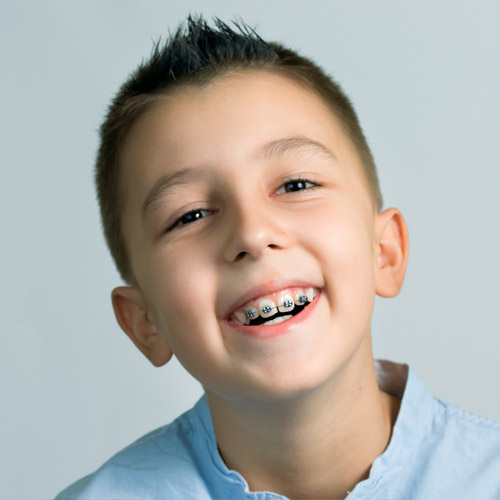 The American Association of Orthodontists recommends that your child get an orthodontic evaluation no later than 7 years old.
The American Association of Orthodontists recommends that your child get an orthodontic evaluation no later than 7 years old.
Orthodontists are able to identify subtle problems with jaw growth and emerging teeth at this age. The check-up at age 7 may reveal that your child’s bite is fine and that treatment is not required at this time. Or, Dr. Im may identify a developing problem but recommend monitoring your child’s growth and development, and then if indicated, begin treatment at the appropriate time. In other cases, Dr. Im might detect a problem that can benefit from early treatment, also known as Phase I treatment.
Early or Phase I treatment can prevent more serious problems from developing and may make treatment at a later age (ie, Phase II Treatment) shorter and less complicated. In some cases, Dr. Im will be able to achieve results that may not be possible once the face and jaws have finished growing. Putting off recommended treatment can result in a need for more invasive treatment later in life that may not completely fix your child’s smile.
While the age that kids get braces vary, orthodontic treatment most often begins between the ages of 8 and 14.
Some orthodontic problems are easier to correct if they are treated early, so an evaluation at age 7 is important so Dr. Im can advise you as to the ideal time to begin treatment. Early treatment may give Dr. Im the chance to guide jaw growth, lower the risk of trauma to protruded front teeth, correct harmful oral habits, improve appearance, guide permanent teeth into a more favorable position, and/or improve the relationship of the lips. Receiving early treatment may prevent the removal of permanent teeth later in life, or the need for surgery to realign the jaws.
 By getting an early orthodontic evaluation, you’ll be giving your child the best opportunity for a beautiful, healthy, functional smile.
By getting an early orthodontic evaluation, you’ll be giving your child the best opportunity for a beautiful, healthy, functional smile.
Signs that your child may need early orthodontic treatment:
- Crossbite of the front or back teeth (top teeth are behind or inside the bottom teeth)
- Crowding of the teeth
- Open bite (front teeth do not touch when the back teeth are closed)
- Protruding teeth
- Deep bite (upper teeth overlap the bottom teeth too much)
- Underbite (the lower front teeth are in front of the upper teeth when biting down)
- Spacing
- Oral habits (such as thumb/finger-sucking)
- Early or late loss of baby teeth
- Difficulty chewing or biting
- Mouth breathing
- Jaws that shift or make sounds
- Speech difficulties
- Biting the cheek or the roof of the mouth
- Unbalanced facial appearance
- Clenching or grinding of the teeth

